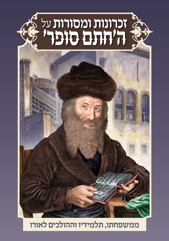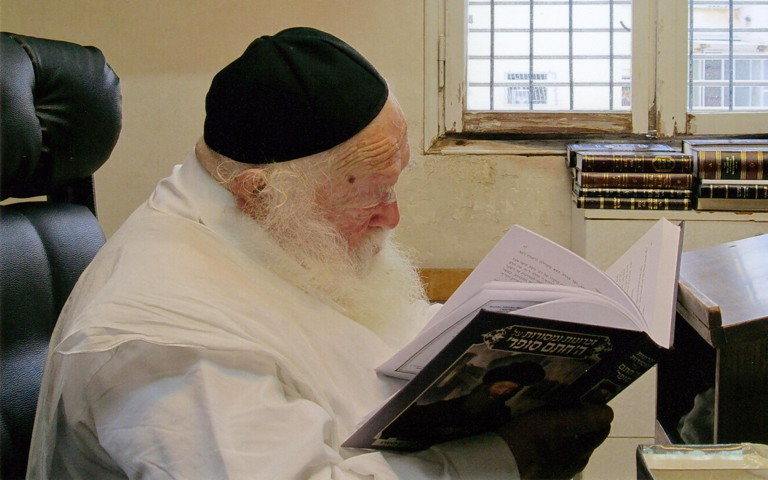7 Kislev 5774
‘זכרונות ומסורות על ה’חתם סופר
Memories and Traditions of the “Chasam Sofer” (Hebrew)
From his Family, his Students, and his Followers
Edited by Rav Binyomin Shlomo Hamburger
Enhanced and revised edition
Bnei Brak, 5774
431 pages
Distributed by Yefe Nof-Feldheim. Available in fine Jewish bookstores.
Table of Contents | Sample Pages
Historically, the biographies of Torah luminaries have been rare. Consequently, the account of the lives of most of our Torah masters, sages of each generation, has gone lost, and only fragmented pieces of information have reached us about the events of then. In recent generations however, due to the decline of Torah study, a greater thirst has been kindled for biography as a medium through which to inspire the study of their works and the emulation of their deeds, resulting in the proliferation of biographies of many of our nation's Torah giants.
It is reasonable to assume that there are not many like Rav Moshe Sofer, the author of Chasam Sofer, who merited to have so many historical accounts and traditions recorded about him. The sheer abundance of available information about the Chasam Sofer is much greater than that of our other great Sages who lived in his generation or generations preceding or succeeding his. This is not only due to his voluminous literary output that is filled with diverse personal descriptions, but also because of the many vignettes that were inscribed by his colleagues and those guided by his inspiration, upon whom his great personality left an indelible mark.
Despite the multitude of biographies, one who wishes to acquaint himself with the history of the Chasam Sofer ought to consult first with the book Chut HaMeshulash, authored by the Chasam Sofer's grandson, Rabbi Shlomo Sofer-Schreiber zt"l, Rav of Bergsas, Hungary, a content-rich book, penned by one well-versed in the Torah and imbued with fear of Heaven, an accomplished scribe and an orator of note.
Since Rabbi Schreiber's book draws heavily on those biographies that preceded his, its significance is overshadowed by their status as principal sources. Some of the material before us was available to Rabbi Schreiber when he wrote his own work. From this volume we can glean many details about the Chasam Sofer that do not appear in Chut HaMeshulash and we can examine previous versions and first-hand testimonies, which were known to us in the past only through the account of the Chut HaMeshulash.
All this has been collected into one compendium, including details about the Chasam Sofer that were not known at all by the broader public, as well as information unfamiliar even to those who study the works of the Chasam Sofer and historical researchers. Each section is preceded by introductory comments and contains footnotes.
The first edition of this book was received with much acclaim by the Chasam Sofer's ardent followers and does not leave the desks of his greatest descendants.


